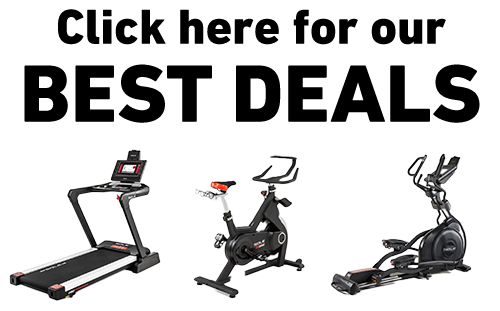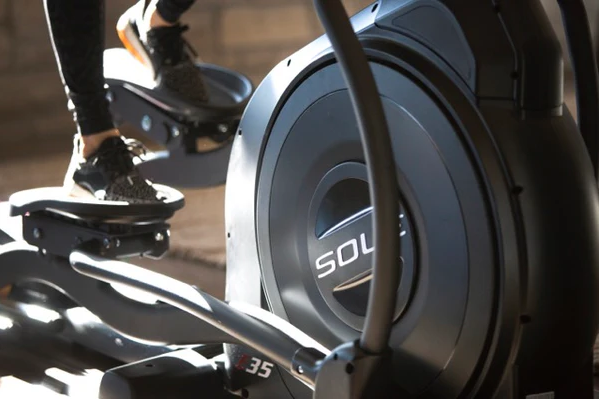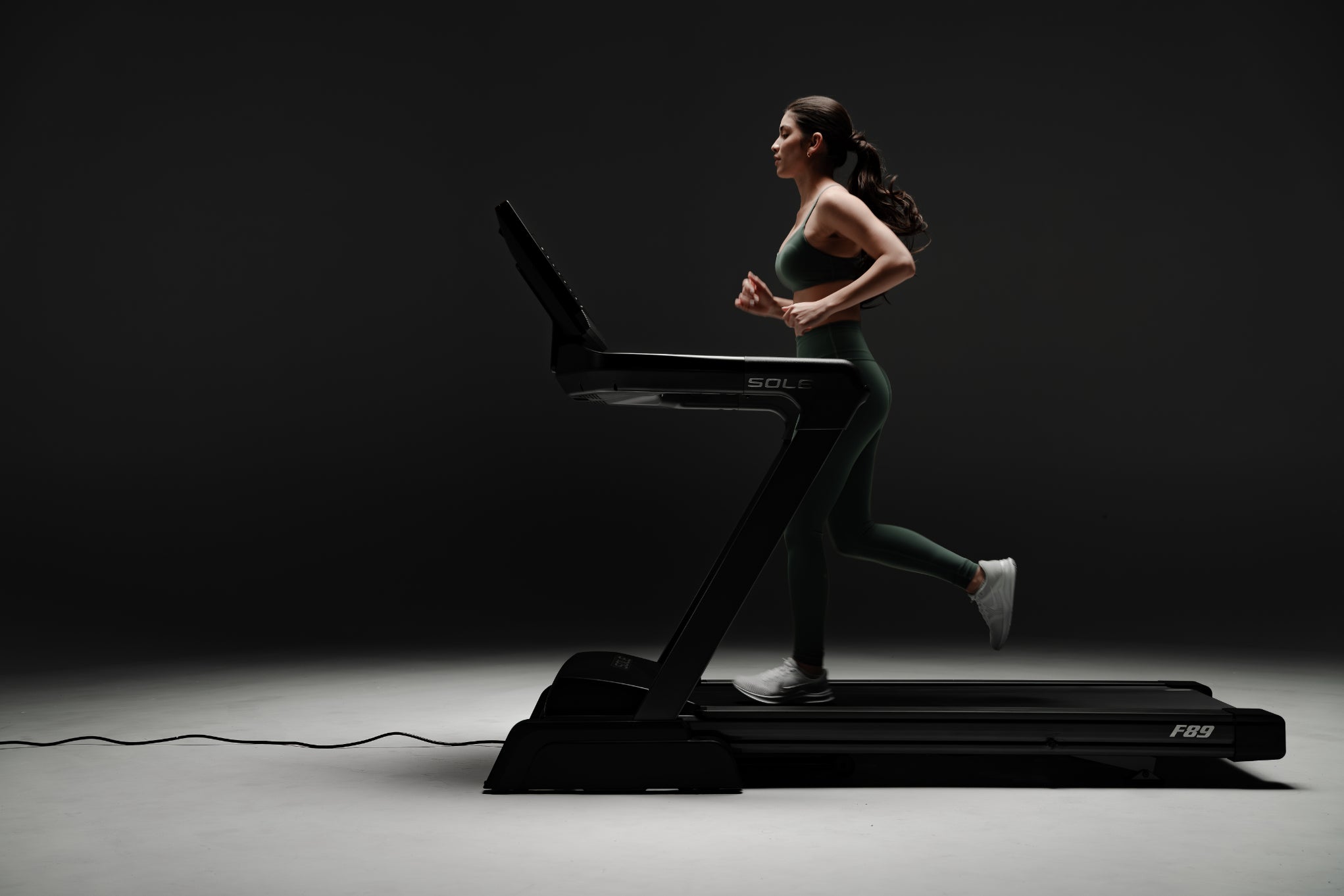Key Takeaways
- Pedaling backwards on an elliptical engages different muscle groups, especially the quadriceps and calves.
- Backward pedaling can increase calorie burn due to greater muscle engagement.
- Switching directions can prevent workout plateaus and keep your routine exciting.
- Using the elliptical backwards can improve knee health and provide a lower-impact workout for joints.
- SOLE elliptical models such as the E95 offer excellent features for both forward and backward pedaling.
|
At SOLE Fitness, we’re proud to offer the best treadmills for your home or gym. These machines are crafted to meet the highest standards of quality and performance, ensuring they are ideal for anyone - from fitness novices to seasoned athletes. Featured Products SOLE Ellipticals: Priced from $1,199.99, SOLE ellipticals are known for their ergonomic design, durability, and affordability. They provide a quiet, smooth workout with intuitive consoles, adjustable stride lengths, incline options, and heart rate monitoring, ensuring a comprehensive exercise experience. |
Note: The price ranges mentioned above are based on the information provided at the time of writing and are subject to change over time and across different locations.
Backwards vs Forwards Elliptical Pedaling: A Quick Comparison
Using the elliptical backwards might seem unconventional, but it comes with several unique benefits. In the table below, we’ve summarized the differences between forwards and backwards pedaling.
|
Feature |
Pedaling Forwards |
Pedaling Backwards |
|
Muscle Engagement |
Primarily works the quadriceps and glutes. |
Emphasizes hamstrings and hip extensors. |
|
Caloric Burn |
Moderate calorie burn. |
Higher calorie burn due to increased muscle engagement and heart rate. |
|
Core Activation |
Core muscles engage for stability. |
Greater core engagement required for balance. |
|
Balance Requirement |
Less balance required. |
More balance and coordination needed. |
|
Posture Improvement |
Standard posture; less focus on core. |
Can improve posture when the core is engaged. |
|
Cardiovascular Intensity |
Steady heart rate during moderate intensity. |
Higher heart rates and intensity; can serve as a more challenging workout. |
|
Variety in Workout |
Commonly used for steady-state cardio. |
Adds variety and can prevent workout monotony - suitable for interval training. |
|
Muscle Fatigue |
Quads may fatigue quicker due to constant use. |
Different muscle groups are used, potentially delaying fatigue. |
|
Knee Health |
Less emphasis on knee strengthening. |
Can improve knee range of motion and reduce strain. |
Engaging Different Muscle Groups
Pedaling Both Forward and Backward
To maximize the benefits, combine both forward and backward pedaling in your workouts. This balanced approach ensures that you are working out all major muscle groups effectively.
- Forward Pedaling: Primarily works the hamstrings and glutes.
- Backward Pedaling: Focuses on the quadriceps and calves.

Enhanced Muscle Activation
Backward pedaling on an elliptical can lead to enhanced muscle activation. Since it’s less common, your muscles need to work harder to adapt to the new movement pattern. This increased effort can result in greater muscle engagement and strength development.
Improving Cardiovascular Fitness
Heart Rate Increase
When you pedal backwards, your heart rate tends to increase because of the additional effort required. This can be beneficial for cardiovascular health, as a higher heart rate indicates a more intense workout.
Metabolism Boost
Higher intensity workouts, such as backward pedaling, can boost your metabolism. This means you’ll continue to burn calories even after you’ve finished your workout, making it an effective way to manage weight. The extra effort required for backward pedaling engages more muscles, leading to a greater calorie burn and metabolic rate increase.
Endurance Building
Most importantly, incorporating backward pedaling into your routine can help build endurance. By challenging your body in new ways, you’ll improve your overall stamina and fitness levels. This is particularly beneficial for athletes or anyone looking to enhance their cardiovascular performance.
Besides, switching directions can make your workout feel less monotonous, keeping you motivated to stick with your fitness routine.
Protecting and Strengthening Joints
Knee Health
Elliptical machines are already known for their low-impact nature, and backward pedaling can further enhance these benefits.
Backward pedaling can be particularly beneficial for knee health - it reduces the stress on your knee joints compared to running on a treadmill or other high-impact exercises. This makes it a great option for individuals with knee issues or those recovering from knee injuries.
Lower Impact on Joints
Because backward pedaling on an elliptical requires a different movement pattern, it can distribute the impact more evenly across your joints. This can help prevent joint pain and injuries, making it a safer option for long-term exercise.
Rehabilitation
Backward pedaling can also be a valuable tool for rehabilitation: physical therapists often recommend it for patients recovering from lower body injuries because it strengthens muscles without putting too much strain on the joints. It’s a gentle yet effective way to regain strength and mobility.
Switching Up Your Routine
Avoiding Workout Plateaus
When you do the same workout repeatedly, your body adapts, and progress can stall. By incorporating backward pedaling, you challenge your muscles in new ways, which can help you break through plateaus and continue making gains.
Keeping Exercise Fun
Variety can make your workouts more enjoyable - trying new things, like pedaling backwards, can make exercise feel less like a chore and more like an engaging activity. This can help you stay consistent with your fitness routine.
Interval Training
Using the elliptical backwards is also excellent for interval training. You can alternate between forward and backward pedaling to create a high-intensity interval training (HIIT) session. This type of workout is highly effective for burning calories and improving cardiovascular fitness.
Proper Techniques for Pedaling Backwards
Correct Form
Maintaining the correct form is crucial - keep your back straight, shoulders relaxed, and core engaged; avoid leaning too far forward or backward. Start with a slower pace to get used to the movement, and gradually increase your speed as you become more comfortable.
Common Mistakes
One common mistake is leaning too far forward, which can cause lower back pain. Instead, keep an upright posture to protect your spine. Another mistake is overextending your knees, which can lead to joint strain. As such, always maintain a slight bend in your knees to prevent injury.
Combining Forward and Backward Pedaling
For the best results, incorporate both forward and backward pedaling into your elliptical workouts. This combination provides a comprehensive workout that targets all major muscle groups and enhances overall fitness.
Workout Routines
Here are some sample routines to get you started:
- Beginner: 5 minutes forward, 2 minutes backward, repeat for 20 minutes.
- Intermediate: 7 minutes forward, 3 minutes backward, repeat for 30 minutes.
- Advanced: 10 minutes forward, 5 minutes backward, repeat for 45 minutes.
Balancing Effort
Start with shorter intervals of backward pedaling and gradually increase the duration as you become more comfortable with the movement. This balanced approach will help you avoid overuse injuries and ensure a well-rounded workout.
Conclusion
Pedaling backwards on an elliptical has many benefits, including engaging different muscle groups, increasing calorie burn, and adding variety to your workouts. It can also improve cardiovascular fitness and protect your joints. By incorporating both forward and backward pedaling, you can achieve a well-rounded and effective workout routine.
At SOLE, we offer high-quality ellipticals - some of them are suitable for backwards pedaling. For example, our E95 works in both forward and reverse motion. This model has a high flywheel weight (27 lbs) and high gear ratio that can give a smooth experience - even when pedaling backwards!

Frequently Asked Questions (FAQ)
Why should I pedal backwards on an elliptical?
Pedaling backwards engages different muscle groups, increases calorie burn, and adds variety to your workout. It can also improve knee health and provide a lower-impact exercise option.
Are there any risks to pedaling backwards?While backward pedaling is generally safe, improper form can lead to lower back or knee strain. Ensure you maintain an upright posture and keep a slight bend in your knees to avoid injury.
How often should I pedal backwards during my workouts?
Incorporate backward pedaling into your routine a few times a week: start with shorter intervals and gradually increase the duration as you become more comfortable. Aim for a balanced approach, combining both forward and backward pedaling.



Leave a comment
This site is protected by hCaptcha and the hCaptcha Privacy Policy and Terms of Service apply.